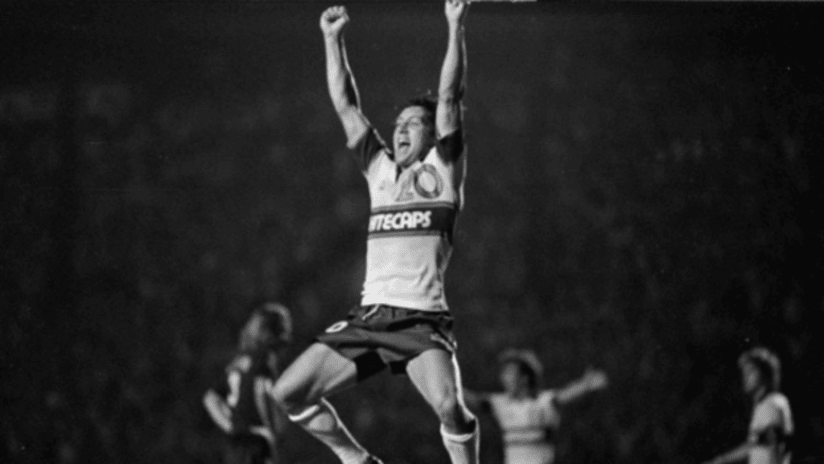Sometimes, there’s more to the beautiful game than meets the eye. Delve deeper with Analysts’ Corner, presented by EC Managed IT, a new blog featuring tactical insights from Whitecaps FC video analyst coach Andrew Peat, assistant video analyst Luke Summers, and Academy and assistant first team video analyst Andrew Foster.
This week’s focus will explore switching of play in the offensive phase of the game. The term “switch play” is often used in coaching language around the world and can be an element of tactical strategy where the ball moves from one side of the field to the opposite side.
Why do teams change the point of attack orswitchplay?
Teams use this approach to exploit space on the opposite side to progress the ball or to exploit a numerical imbalance in favour of the attacking team. It also can create 1v1 and 2v2’s on the opposite side where the defenders are matched with the attackers but have limited defensive cover.
Important details in the switch of play
1. Width has to be created with movement & positioning
This will vary based on tactical strategies, playing principles, coaching philosophy and players’ decisions but providing width (making the field big and wide) is important. This does not simply mean players stand on the touch line, though at times it can depending on the approach, but players can also move into wide areas as the situation on the ball creates triggers for wide players to adjust. The offensive positional play needs to be balanced with defensive transition details if the team were to lose the ball.
2. Speed of play
Moving the ball at a speed or skipping out players can allow the ball to progress quicker to the opposite side, making it harder for the defensive team to slide and create cover. Details around the quality of the pass are important, such as if it’s in front or behind the receiving player and the passing technique itself.
3. Vision & Awareness
The players on the ball need to have an ability to see the game before receiving the ball and adapt to the changing picture around them. Being able to see the game can inform decision-making processes on how to pass the ball, where pressure is coming from, how to link play, and the ability to turn and create.
It’s important to recognize that the switching play can occur under many varying contextual situations and how it’s achieved on the field can be influenced by the opposition team’s defensive structure, tactics and principles. This article will explore three examples that allows space to be exploited on the opposite side and, as a result, an attack to be advanced.
Switching through the midfield – Through
The above video shows how Napoli switch play through the midfield, using short passes and quick combination play. This speed of play, coupled with the awareness of Napoli’s players, allows them to progress the ball forward from one side of the field to the other with complete control. In this instance, the controlled possession acts as a trigger for the left back to join the attack and provide width as the ball progresses.
Switching play around the back line – Around
This example shows the Vancouver Whitecaps FC U-19 Academy team execute a switch of play by bringing the opposition to one side of the field and then making a pass that skips out a player, increasing the speed of play and leading to a numerical advantage on the ball side.
With this numerical advantage, depth is created by opposite movements. Here, the centre midfielder creates depth and exploits the space behind the opposing team’s backline. By switching the play around the backline, the ‘Caps U-19s were able to progress the ball.
Centre back switch from central area – Over
As seen in this Portugal clip from the 2018 FIFA World Cup, the right centre back is under low pressure facing forward with the ball in controlled possession. As the ball moves from the left side to the right centre back, Spain drops, slides and comes central to maintain their defensive shape.
When Pepe, the Portuguese centre back, plays the diagonal ball from the right to left side there are three Portuguese players wide and underneath that allow for multiple options.
The switch pass is longer and over the Spanish defensive block. As they move inside, they cannot compete and challenge the aerial pass. This allows for Portugal to progress the ball into attacking third. The centre back’s recognition of the numerical advantage in that area, the technical execution of the pass, and the situational awareness of the opponent’s setup are key details in the process towards the successful switch of play.
There are many elements involved when a team is in possession in regards to how they want to attack, areas they want to exploit, and how they go and do it. As demonstrated above, switching play is one important part of the game that can allow teams to exploit space in varying ways to progress the ball closer to the opposition team’s goal.




